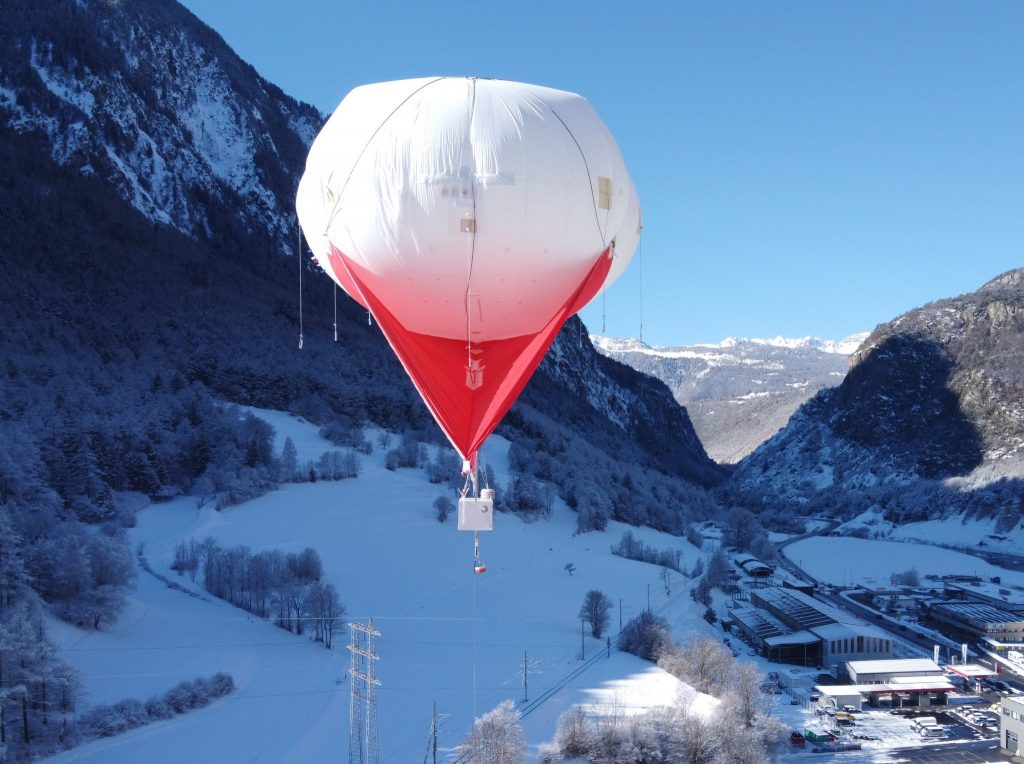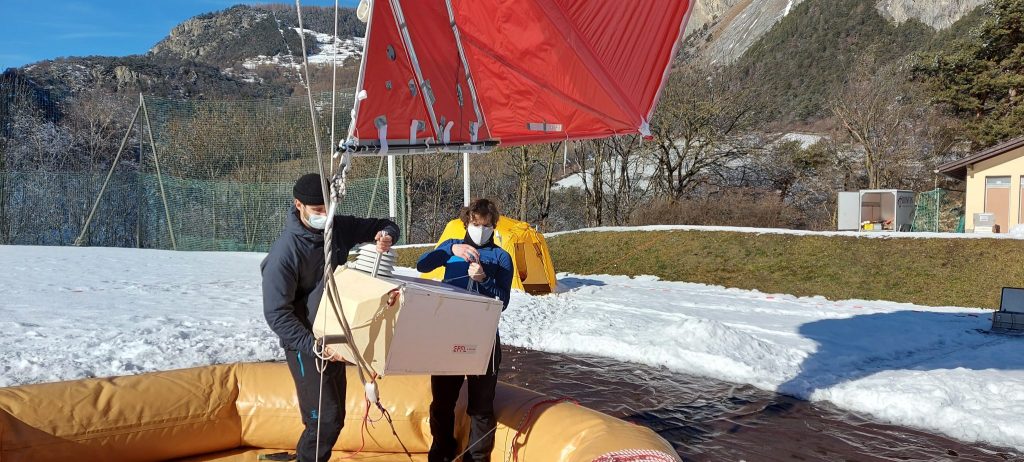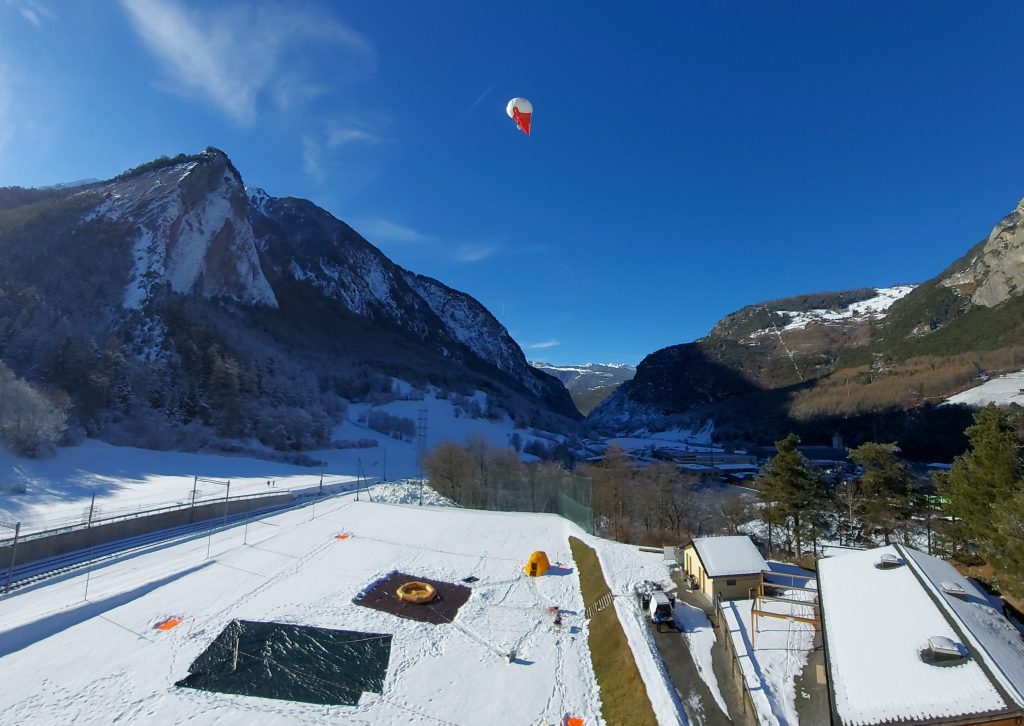Last January, the EERL team has for the first time deployed its brand new helikite in Sembrancher (VS) for a field test campaign. The goal of the campaign was to test the functionality of the helikite and the MoMuCAMS payload.

What is the aim of MoMuCAMS?
MoMuCAMS is designed to be a flexible platform able to host a series of instruments to measure aerosols and trace gases in the lower troposphere. Attached to a helikite, it can sample the air from the ground to a maximum altitude of 800m (length of our tether) and provides valuable information about aerosol and trace gases across the atmospheric boundary layer and free troposphere. These in-situ measurements are crucial to understand how these components are transported and distributed in the atmosphere.

Sembrancher, VS
Flying a helikite is a consequent logistical and organizational task. After scanning the canton for potential sites, we finally selected Sembrancher in accordance with local authorities and the federal office for civil aviation. Sembrancher is located at the bottom of an alpine valley, close to industrial sites and houses, yet not to close to the busy restricted airspaces from the Rhone valley.
In winter, temperature inversions often take place at the bottom of valleys. It is the result of colder heavier air descending along the slopes of the mountains at night and accumulating at the bottom. Also, because the surface is so cold, air just above the surface is cooled, while air further aloft does not experience the same cooling. These inversions create very stable atmospheric situations. Hence, the mixing of air within an inversion with that above is hampered. When pollutants are emitted within the inversion layer, they get “trapped” and if the inversion persists, they accumulate. This site represents therefore a very interesting study location for our system.
After selecting the site and obtaining the authorization, we had to carefully organize the logistics. Helium tanks have to be directly delivered to the location. An entire safety infrastructure has to be installed around the ground station to avoid any accident with an aircraft in addition to the balloon equipment for regular operations. And of course, everything has to be powered!
A technical challenge as well
Besides the organizational tasks, this campaign was also and mostly a technical challenge. Our payload had to be designed and built just under 8 months and many systems had to be ready to be tested during the campaign. Besides the complexity of each instrument, the system also includes a central management system. A custom-made payload computer has been designed for data logging, communication with the ground station for live data visualization, battery state-of-charge control and remote activation of instruments. A lot of consideration had to be taken for the box itself. The box, which is holding the instruments has to be large enough to host several instruments, yet not too heavy because of the limited lift capacity of the balloon. It has to be solid enough to sustain flight conditions and not break in the air. And it has to be thermally insolated and weatherproof to protect the instruments from environmental conditions. Finally, the system has to be powered with batteries, which of course, add a lot of weight to the system.

Feedback
Overall, the campaign was a success and many systems proved to be working. The helikite totalized 13 flights and 21 profiles (several profiles per flight) and gathered a first valuable set of data to be analyzed. We learned a lot about our system and the helikite behavior. This helps us now to determine what can and needs to be improved for future campaigns to tackle the important scientific questions.
In the following weeks, the data analyses will allow drawing first conclusions on our measurements and help to determine the future direction of the helikite research.